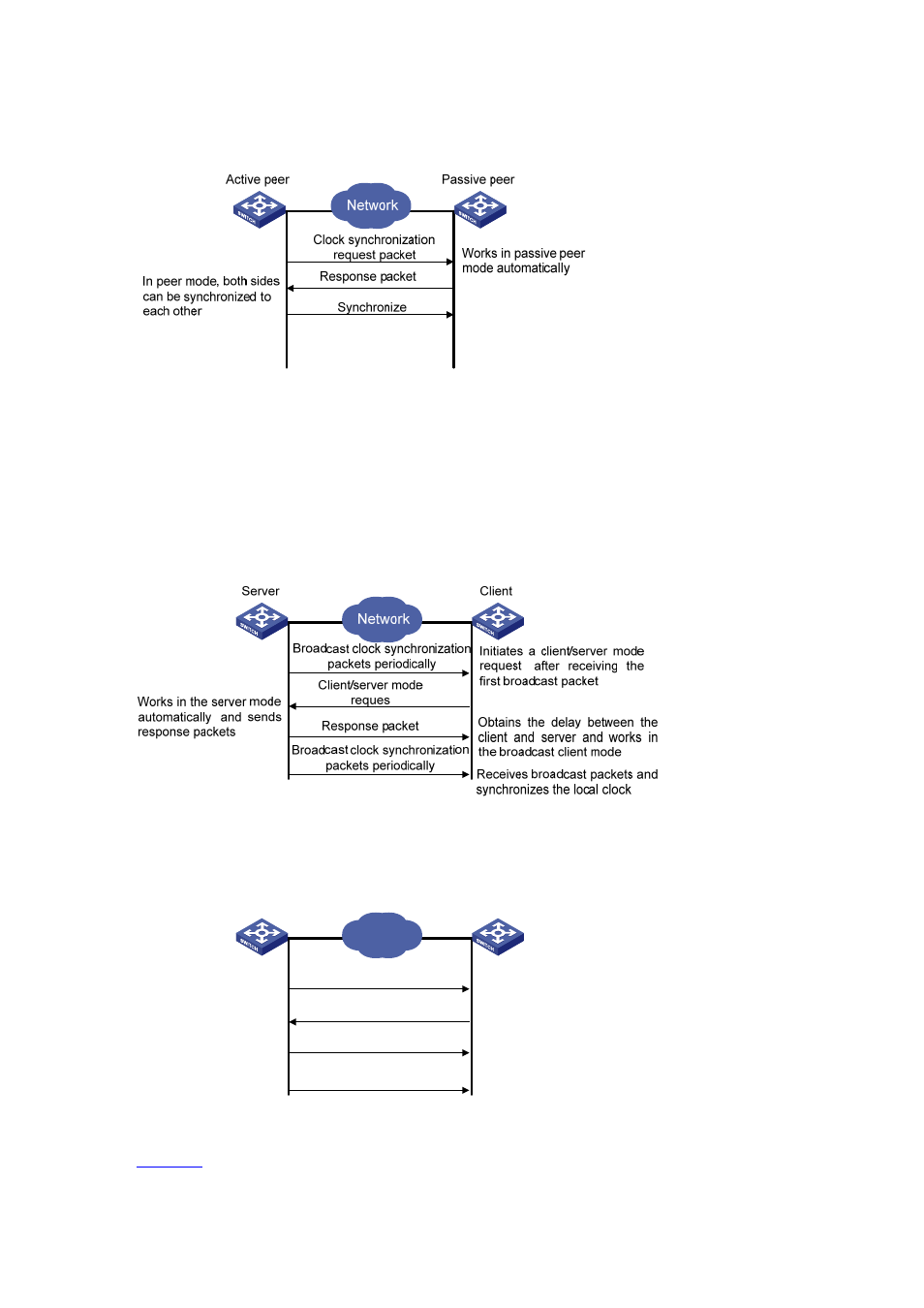Symmetric peer mode, Broadcast mode, Multicast mode – H3C Technologies H3C S3100 Series Switches User Manual
Page 694

1-4
Symmetric peer mode
Figure 1-3 Symmetric peer mode
In the symmetric peer mode, the local S3100 Ethernet switch serves as the symmetric-active peer and
sends clock synchronization request first, while the remote server serves as the symmetric-passive
peer automatically.
If both of the peers have reference clocks, the one with a smaller stratum number is adopted.
Broadcast mode
Figure 1-4 Broadcast mode
Multicast mode
Figure 1-5 Multicast mode
Client
Multicast clock synchronization
packets periodically
Network
Server
Initiates a client/server mode
request
after receiving the
first multicast packet
Works in the server mode
automatically and sends
response packets
Client/server mode
reques
Response packet
Obtains the delay between the
client and server and works in
the multicast client mode
Receives multicast packets and
synchronizes the local clock
Multicast clock synchronization
packets periodically
describes how the above mentioned NTP modes are implemented on H3C S3100 series
Ethernet switches.